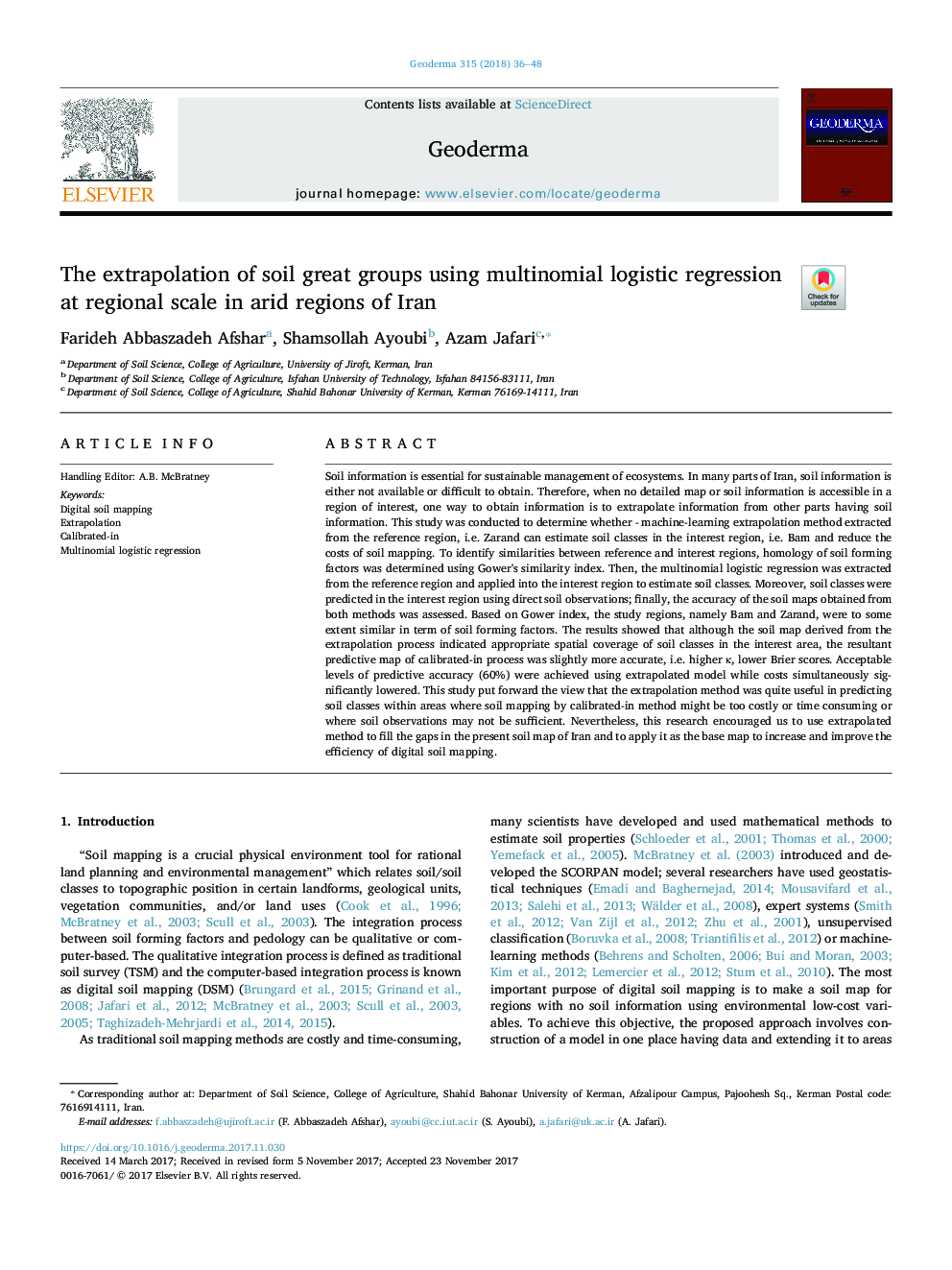| کد مقاله | کد نشریه | سال انتشار | مقاله انگلیسی | نسخه تمام متن |
|---|---|---|---|---|
| 8894236 | 1629402 | 2018 | 13 صفحه PDF | دانلود رایگان |
عنوان انگلیسی مقاله ISI
The extrapolation of soil great groups using multinomial logistic regression at regional scale in arid regions of Iran
ترجمه فارسی عنوان
استخراج گروه های بزرگ خاک با استفاده از رگرسیون لجستیک چندملیتی در مقیاس منطقه ای در مناطق خشک
دانلود مقاله + سفارش ترجمه
دانلود مقاله ISI انگلیسی
رایگان برای ایرانیان
کلمات کلیدی
نقشه برداری خاک دیجیتال، اضطراری، کالیبراسیون رگرسیون لجستیک چند ملیتی،
موضوعات مرتبط
مهندسی و علوم پایه
علوم زمین و سیارات
فرآیندهای سطح زمین
چکیده انگلیسی
Soil information is essential for sustainable management of ecosystems. In many parts of Iran, soil information is either not available or difficult to obtain. Therefore, when no detailed map or soil information is accessible in a region of interest, one way to obtain information is to extrapolate information from other parts having soil information. This study was conducted to determine whether - machine-learning extrapolation method extracted from the reference region, i.e. Zarand can estimate soil classes in the interest region, i.e. Bam and reduce the costs of soil mapping. To identify similarities between reference and interest regions, homology of soil forming factors was determined using Gower's similarity index. Then, the multinomial logistic regression was extracted from the reference region and applied into the interest region to estimate soil classes. Moreover, soil classes were predicted in the interest region using direct soil observations; finally, the accuracy of the soil maps obtained from both methods was assessed. Based on Gower index, the study regions, namely Bam and Zarand, were to some extent similar in term of soil forming factors. The results showed that although the soil map derived from the extrapolation process indicated appropriate spatial coverage of soil classes in the interest area, the resultant predictive map of calibrated-in process was slightly more accurate, i.e. higher κ, lower Brier scores. Acceptable levels of predictive accuracy (60%) were achieved using extrapolated model while costs simultaneously significantly lowered. This study put forward the view that the extrapolation method was quite useful in predicting soil classes within areas where soil mapping by calibrated-in method might be too costly or time consuming or where soil observations may not be sufficient. Nevertheless, this research encouraged us to use extrapolated method to fill the gaps in the present soil map of Iran and to apply it as the base map to increase and improve the efficiency of digital soil mapping.
ناشر
Database: Elsevier - ScienceDirect (ساینس دایرکت)
Journal: Geoderma - Volume 315, 1 April 2018, Pages 36-48
Journal: Geoderma - Volume 315, 1 April 2018, Pages 36-48
نویسندگان
Farideh Abbaszadeh Afshar, Shamsollah Ayoubi, Azam Jafari,
